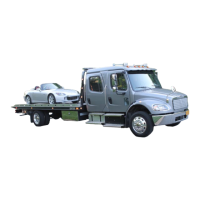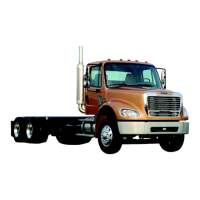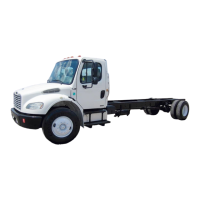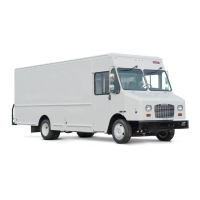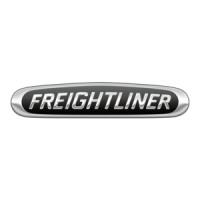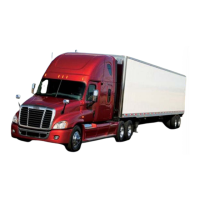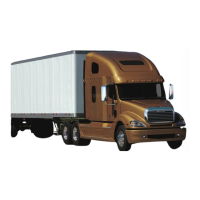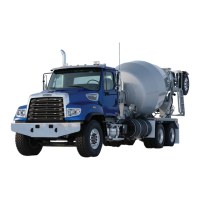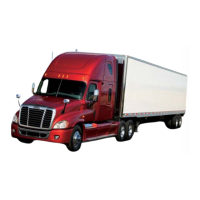Do you have a question about the freightliner M2 Plus and is the answer not in the manual?
Outlines the various service publications available for Freightliner vehicles and their purpose.
Explains the layout and components of a typical maintenance manual page.
Lists the main groups and titles covered in the maintenance manual.
Explains how to determine the correct maintenance intervals based on vehicle usage and conditions.
Presents tables detailing maintenance intervals for different service schedules (I, II, III).
Details specific maintenance tasks and intervals for Schedule I (severe service) usage.
Provides maintenance intervals for Schedule II (short-haul) and Schedule III (long-haul) usage.
Lists various maintenance operations and the intervals (IM, M1, M2, M3, M4, M5) at which they should be performed.
Lists the specific maintenance operations required for the initial maintenance interval.
Details the maintenance tasks required for the M1 maintenance interval.
Outlines the maintenance procedures for the M2 maintenance interval.
Lists the maintenance tasks required for the M3 maintenance interval.
Details the maintenance procedures for the M4 maintenance interval.
Outlines the maintenance tasks for the M5 maintenance interval.
Explains federal requirements for vehicle noise emission control maintenance instructions.
Advises using genuine Freightliner parts for noise emission control systems.
Refers to the owner's warranty information book for noise emission control systems.
Outlines federal prohibitions and acts presumed to constitute tampering with noise control systems.
Details the inspection and replacement procedure for the air cleaner element.
Explains how to inspect the air compressor intake hoses, connections, and coolant lines.
Provides instructions for checking the alternator, battery, and starter electrical connections and wiring.
Details inspection procedures for the fan drive, including checks for loose components and clearance.
Explains how to inspect the radiator cap for proper pressure maintenance and seal integrity.
Provides steps for draining, flushing, and changing the engine coolant.
Describes the procedure for adjusting manually adjusted clutches, focusing on release bearing travel.
Details the process for flushing and replacing the clutch hydraulic fluid, including safety precautions.
Explains how to lubricate the Eaton Fuller clutch release bearing if it is not maintenance-free.
Details the procedure for changing the transmission fluid and filter for Allison transmissions.
Outlines the process for changing fluid and cleaning the magnetic plug in Detroit automated transmissions.
Explains how to inspect the fluid level in Detroit automated transmissions.
Describes how to clean the air filter/regulator element for Eaton Fuller transmissions.
Details the procedure for changing fluid and cleaning magnetic plugs in Eaton Fuller transmissions.
Explains how to check the transmission fluid level for Eaton Fuller manual and automated transmissions.
Provides instructions for inspecting the fifth wheel assembly, mounting brackets, and hardware.
Details the lubrication procedures for Fontaine, ConMet Simplex, and Holland fifth wheels.
Explains how to check and tighten frame fasteners to ensure proper torque and prevent damage.
Describes how to clean and lubricate trailer electrical connectors to prevent corrosion.
Covers inspection of spring assemblies, brackets, crossmembers, gussets, and shock absorbers.
Details the procedure for checking and tightening U-bolt torque on front and rear axles.
Explains how to check I-bolt torque on front and rear axles for TufTrac suspension.
Details the procedure for checking drive axle alignment and performing a toe-in inspection.
Explains how to check the torque of the nut that holds the draw key on the knuckle.
Provides lubrication instructions for Detroit axles and Sealed/Easy Steer kingpins.
Guides on inspecting hub cap vent plugs for signs of leakage or damage.
Details how to inspect tie rod boots for damage and check the cross tube and clamps.
Explains how to lubricate tie rod ends for Detroit and Meritor axles.
Covers periodic inspection and maintenance of wheel ends, including oil seal and hub inspection.
Instructs on checking the axle housing breather for cleanliness and proper operation.
Details the procedure for changing axle lubricant and cleaning magnetic drain plugs.
Explains how to check and maintain the rear axle lubricant level for Detroit and Meritor axles.
Outlines how to inspect tires for abnormal wear, damage, and proper inflation pressure.
Details the procedure for checking wheel nut torque, including tightening sequences.
Explains how to inspect the driveline for loose end yokes, universal joint wear, and shaft damage.
Provides instructions and approved lubricants for lubricating universal joints and slip yokes.
States no scheduled maintenance for Bendix air valves within warranty; consult manual if malfunctioning.
Explains replacing the air dryer desiccant cartridge, emphasizing correct type and yearly replacement.
Explains the operational test and pressure setting checks for the Governor D-2A.
Details lubrication procedures for automatic slack adjusters from Dana Spicer, Haldex, and Gunite.
Details lubrication procedures for Meritor slack adjusters, including "in service" inspection.
Details inspection of the drag link for movement, ball stud nut looseness, and boot condition.
Explains how to change the power steering fluid and filter, including safety precautions.
Describes how to lubricate the power steering gear sector shaft using a hand-type grease gun.
Outlines inspection of CNG fuel cylinders for damage or deterioration by a qualified inspector.
Explains the procedure for replacing the CNG high-pressure fuel filter element to maintain system integrity.
Covers replacing the filter element in Alliance and DAVCO fuel/water separators.
Describes tests to check LNG tank vacuum integrity by monitoring pressure changes over time.
Details the procedure for replacing CGI bellows in the exhaust system to prevent engine damage from air leaks.
Guides on inspecting electrical components for dirt, damage, loose mounting, and proper cover fit.
Explains how to inspect and clean trailer electrical cables and sockets for corrosion.
Covers inspection of aerodynamic components like fairings, side skirts, and bumpers for damage.
Instructs to check if folding main mirrors pivot freely on their points and to break loose debris.
Details inspection of the refrigerant compressor clutch, drive belt, and moisture indicator.
Explains the procedure for replacing the HVAC air filter every six months or 60,000 miles.
Provides instructions for cleaning and lubricating the hood rear support brackets and isolators.
| Brand | freightliner |
|---|---|
| Model | M2 Plus |
| Category | Trucks |
| Language | English |
